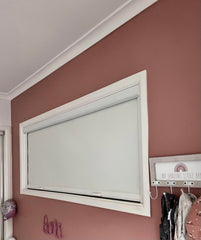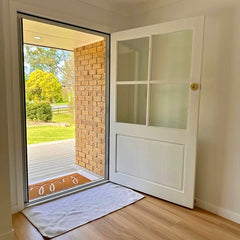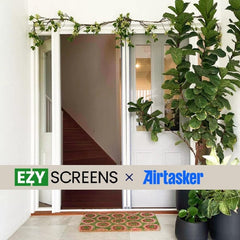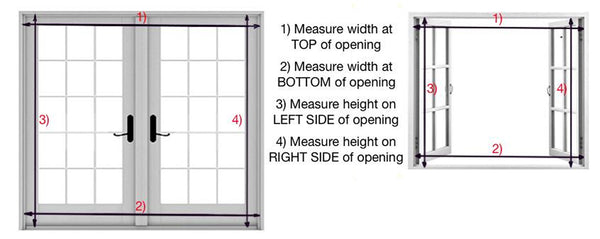Ah, the great Australian summer. Warm breezes, golden sunlight, and ... a relentless swarm of mozzies at the back door. If you’ve ever tried to enjoy a peaceful evening only to be dive-bombed by flies or gnats, you already know why fly screens are a must-have in Aussie homes. But they’re not just about keeping bugs at bay. Fly screens protect your home and allow that fresh air in without compromising security or style. So which fly screen is best?
Understanding the Different Types of Fly Screens
Fly screens may seem simple, but once you scratch the surface, you'll find a surprising variety of options, each designed for different lifestyles, climates, and needs. From fixed panels to retractable systems, and mesh that does far more than meet the eye, choosing the right fly screen depends on what you need most—be it insect control, airflow, UV protection, or security.
You’ll find screens made from fiberglass, aluminium, stainless steel, and even high-tech coated meshes. Designs vary from standard window screens to sleek, retractable fly screens that disappear when not in use (check out these for doors or these for windows). Deciding on what is the best fly screen material for your home hinges on your priorities, so let’s dig deeper.
Comparing Fly Screen Mesh Materials
Fiberglass Mesh Screens
Lightweight, budget-friendly, and widely used, fiberglass mesh is a go-to option for many homeowners. It does a brilliant job of blocking out insects without sacrificing airflow or visibility. Plus, it’s easy to clean and flexible enough to suit various window and door types.
However, it’s not the most robust option, especially in areas with curious pets or high winds. Still, if you’re after simple insect protection with low maintenance, fiberglass delivers great value.
Aluminium Fly Screens
Next up, aluminium fly screens—a step up in strength and durability. Aluminium mesh resists rust, making it a smart pick for coastal areas where salty air tends to accelerate wear and tear. It’s also fire-retardant, adding a bit of peace of mind during bushfire season.
Slightly more rigid than fiberglass, aluminium maintains its shape over time and holds up better under pressure. A great option if you want a balance of longevity, performance, and protection without going all-in on high-security screens.
Stainless Steel Fly Screens
If you live in a high-risk area or simply want the strongest possible screen, stainless steel is king. Built to endure the harshest conditions, stainless steel mesh can handle tough weather, attempted break-ins, and even curious kids and pets throwing their weight around.
These screens are often used in security setups because they combine strength with visibility. They may cost more upfront, but the peace of mind (and long lifespan) often make them well worth the investment.
Key Considerations When Choosing the Best Fly Screen
Climate and Location
Australia's climate swings from coastal breezes to desert dryness and humid tropics. Your fly screen should match the conditions. Live near the ocean? Go with rust-resistant materials like aluminium or stainless steel. In a hot, sun-drenched spot? Look for UV-resistant mesh that can stand the heat without degrading.
Humidity-prone zones may call for mold-resistant mesh, while outback dwellers might prioritise durability against dust and debris. Knowing your environment helps narrow the field quickly.
Security and Durability
If your fly screen is going on a high-traffic door or low-set window, you'll want to factor in durability. A flimsy screen won’t last long if it’s constantly bumped or brushed. In those cases, stronger materials like stainless steel or security-rated aluminium can stand up to everyday wear and tear.
For families with pets or young kids, pet-proof mesh and reinforced frames are also worth considering. After all, a screen that keeps bugs out is only useful if it can stay in one piece.
UV Resistance
Not all fly screens offer UV protection, but some go the extra mile. Polyester or PVC-coated mesh can block harmful rays while still allowing breezes to flow through. That means less fading on your carpets and furniture, and a cooler home during peak sun hours.
UV resistance isn’t just about comfort; it’s a clever way to protect your interiors from sun damage, especially in bright, exposed areas.
How to Install and Maintain Your Fly Screens
Whether you’re the hands-on DIY type or prefer leaving it to the pros, installing and maintaining your fly screens properly makes a huge difference in how long they last and how well they perform.
DIY Installation vs Professional Help
DIY kits are widely available and can be fairly straightforward, especially for standard windows or doors. Retractable options, like these for doors or these for windows, often come with step-by-step guides and are designed for user-friendly installation.
However, tricky window shapes or large sliding doors may call for a professional. Experts can ensure a snug fit, align tracks perfectly, and recommend the best mesh for your setup. It’s a bit more of an upfront investment, but you’re paying for peace of mind and precision.
Ongoing Maintenance
Good news: most fly screens are low maintenance. A regular wipe-down with a damp cloth or a soft vacuum keeps dust and pollen at bay. For a deeper clean, remove the screens and gently hose them down, using mild soap if needed.
Be sure to check frames for signs of wear or damage over time. Retractable screens, in particular, benefit from occasional lubrication of the tracks and a gentle touch when operating the mechanism.
Why Investing in the Right Fly Screen is Worth It
Fly screens might not be glamorous, but they quietly work overtime to improve your home life. The right screen keeps insects out, lets fresh air in, shields against UV, and—depending on your choice—even boosts your security.
They're especially valuable in Australia, where the climate demands solutions that can handle everything from salty coastal air to dust storms and intense sun. And with modern designs like retractable fly screens, you don't have to sacrifice aesthetics for functionality.
Ready to Choose the Best Fly Screen for Your Home?
Whether you’re chasing cool breezes without the bugs or upgrading your home’s comfort and protection, there’s a fly screen at Ezy Screens that fits the bill perfectly. So go ahead—open your windows, slide back your doors, and let the outdoors in (just not the bugs). Your perfect fly screen awaits.







